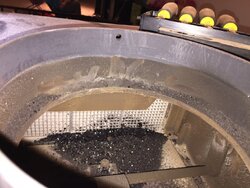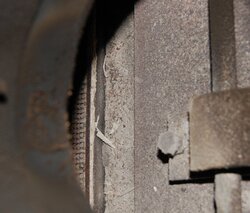So, with the Ashford 30, is there anything I should know when I clean out the chimney for the first time? Been burning since November and have been inspecting and finally feel like I should pull out the Sooteater. Not really all that much build up but I want to run over it.
Does the creosote just fall directly down into the firebox or is there an area where I should clean around the damper opening? With the old VC, there were many areas to inspect and I'm wondering if it's the same with the Ashford.
Does the creosote just fall directly down into the firebox or is there an area where I should clean around the damper opening? With the old VC, there were many areas to inspect and I'm wondering if it's the same with the Ashford.


![IMAG2305[1].jpg IMAG2305[1].jpg](https://www.hearth.com/talk/data/attachments/151/151374-2fb4af2714ea85b20b42f55179867910.jpg)

